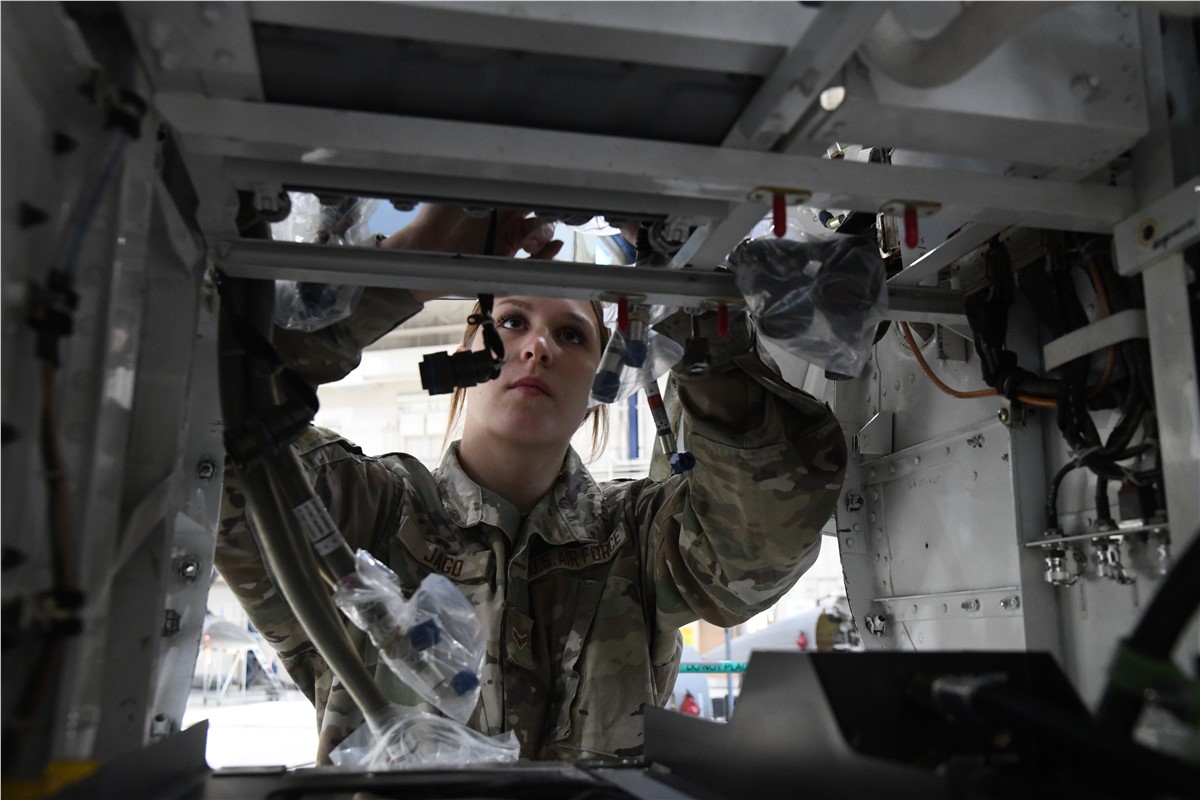AESA Radar Modernizes Bulldog F-16s for the Next Generation
AESA Radar Modernizes Bulldog F-16s for the Next Generation of Airpower
Nine Block 50 F-16CM Fighting Falcons from the 148th Fighter Wing received the new active electronical scanned array (AESA) radar that allows pilots to "find targets in the air and on the ground more easily," said Maj. Michael Kuzmuk, Chief of Wing Weapons for the 148th Fighter Wing.
"The new AESA radars are a huge leap in technology that will make the F-16more lethal and survivable against potential near peer threats," said Col. Nathan Aysta, 148th Fighter Wing Commander.
The 148th Fighter Wing is a multi-purposed Suppression/Destruction of
Enemy Air Defense (SEAD/DEAD) and a NORAD Aerospace Control
Alert-trained (ACA) flying Air National Guard unit located in Duluth,
Minnesota. The 148th is one of five F-16 SEAD/DEAD units in the entire
U.S. Air Force and one of two SEAD/DEAD units in the Air National Guard.
Lockheed picks Northrop’s SABR for US and Taiwan F-16 radar upgrade
Northrop Grumman’s scalable agile beam radar (SABR) has been competitively selected by Lockheed Martin for the US and Taiwan air force’s F-16 Fighting Falcon’s active electronically scanned array (AESA) radar modernisation and upgrade programmes.
The radar is now scheduled to be fitted by Lockheed in USAF’s F-16 C/D fighters to enhance their reliability and add advanced capabilities as part of the aircraft’s combat avionics programmed extension suite (CAPES) upgrade programme.
Northrop Grumman ISR and Targeting Systems Division vice-president and general manager Joseph Ensor said the selection is based on the radar’s affordability, proven performance, and low risk nature.
”SABR will provide F-16s unprecedented operational capability, greater reliability and viability in threat environments beyond 2025," Esnor said.
APG-83 AESA Capability Enhancements
The APG-83 AESA provides the following capability enhancements over legacy mechanically scanned APG-66 & APG-68 radars to ensure F-16s, F-18s and other 4th gen aircraft remain operationally viable and sustainable for decades to come:
- Autonomous, all-environment stand-off precision targeting
- BIG SAR wide area high-res maps
- High quality, coordinate generation
- Greater target detection and tracking range
- Faster search and target acquisition
- Smaller target detection
- Multi-target tracking
- Robust electronic protection (A/A and A/G)
- Enhanced combat ID
- Interleaved mode operations for greater situational awareness
- Maritime modes
- 3-5X greater reliability and availability
From Gaitanakis et al., we can see that within scan angle of 45 degrees, the AESA radar has a greater detection range for LO targets, but the scan angle loss limits detection at 60 degrees due to the lack of a gymbal.
Gaitanakis, Giorgos & Limnaios, George & Zikidis, Konstantinos. (2019). On the use of AESA (Active Electronically Scanned Array) Radar and IRST (InfraRed Search&Track) System to Detect and Track Low Observable Threats. MATEC Web of Conferences. 304. 04001. 10.1051/matecconf/201930404001.
The radar has been indisputably the most important sensor in the battlefield, allowing early warning and tracking of air vehicles. Modern fighter ircraft employing AESA fire control radars are able to acquire and track targets at long ranges, in the order of 50 nautical miles or more. However, the proliferation of low observable or stealth technology has contested radar capabilities, reducing their detection / tracking ranges roughly to one third. This degradation is more severe concerning fighter aircraft radars, since most stealth threats are optimised for higher frequency bands, as in the case of fire control radars. Hence, other parts of the electromagnetic spectrum have been reconsidered, such as infrared radiation (IR). Every aircraft is a source of IR, due to fuel combustion, aerodynamic friction and IR reflection. In this way, a jet fighter can be detected by an IR sensor against the cold background of the sky. Therefore, IRST systems have re-emerged, offering an alternative to the radar. Apart from their capabilities concerning target detection (whether stealth or not), IRST systems also exhibit passive operation, resilience to jamming and better angular accuracy. On the other hand, they are prone to weather conditions, especially moisture, while they cannot measure distance directly, as in the case of the radar. This work explores and compares the capabilities and limitations of the two approaches, AESA radars and IRST systems, offering also some insight to the benefits of sensor fusion.


